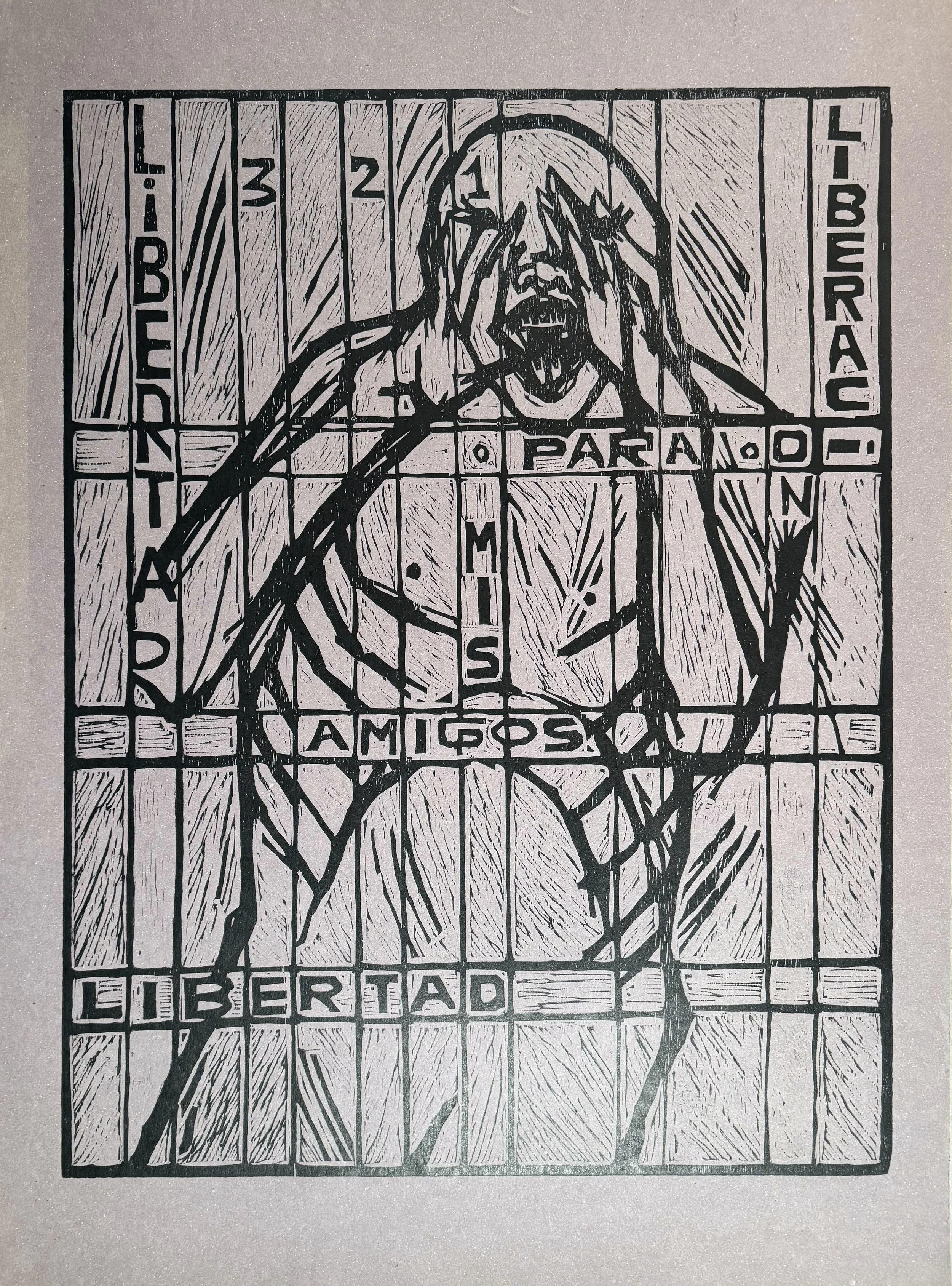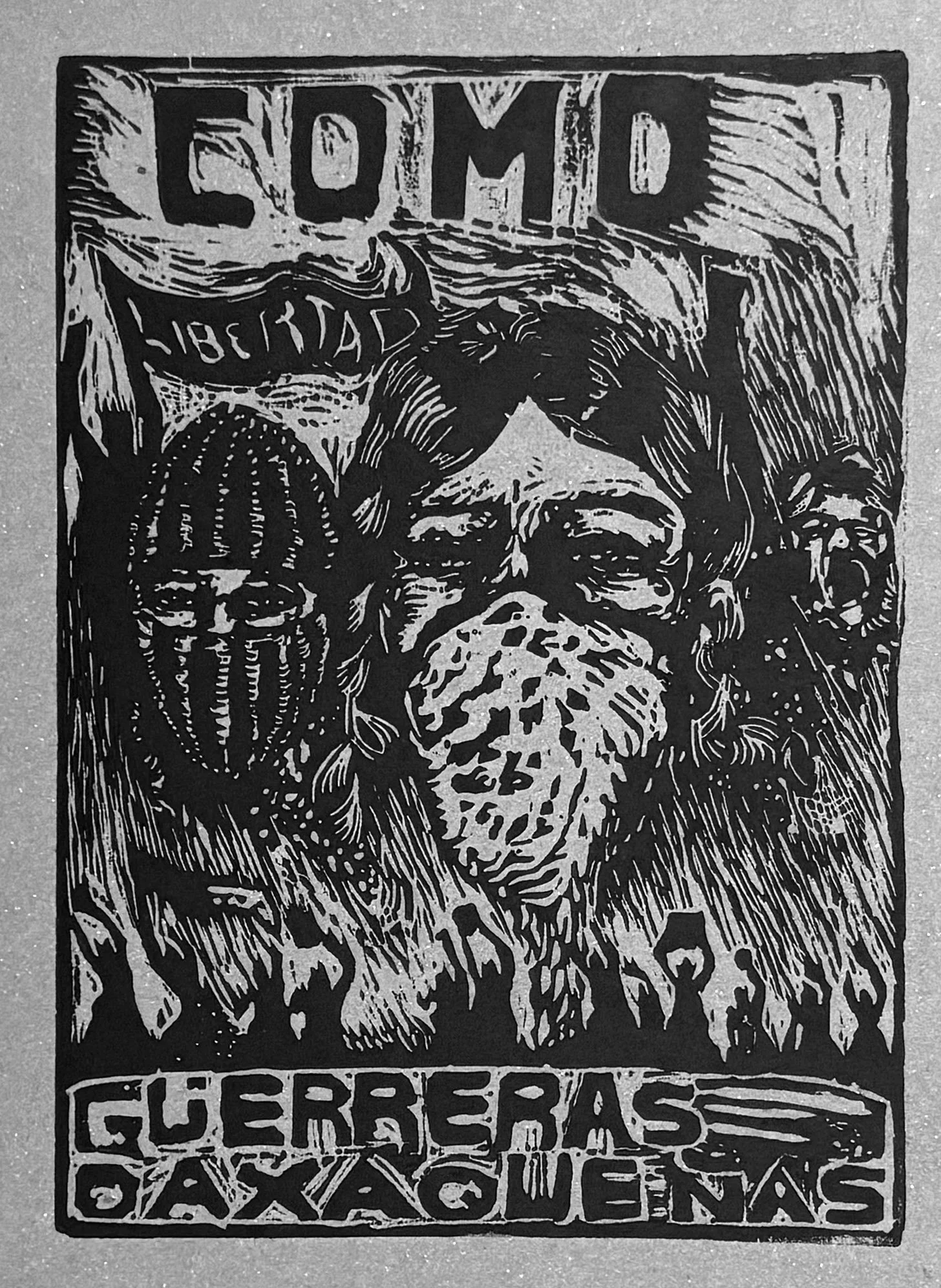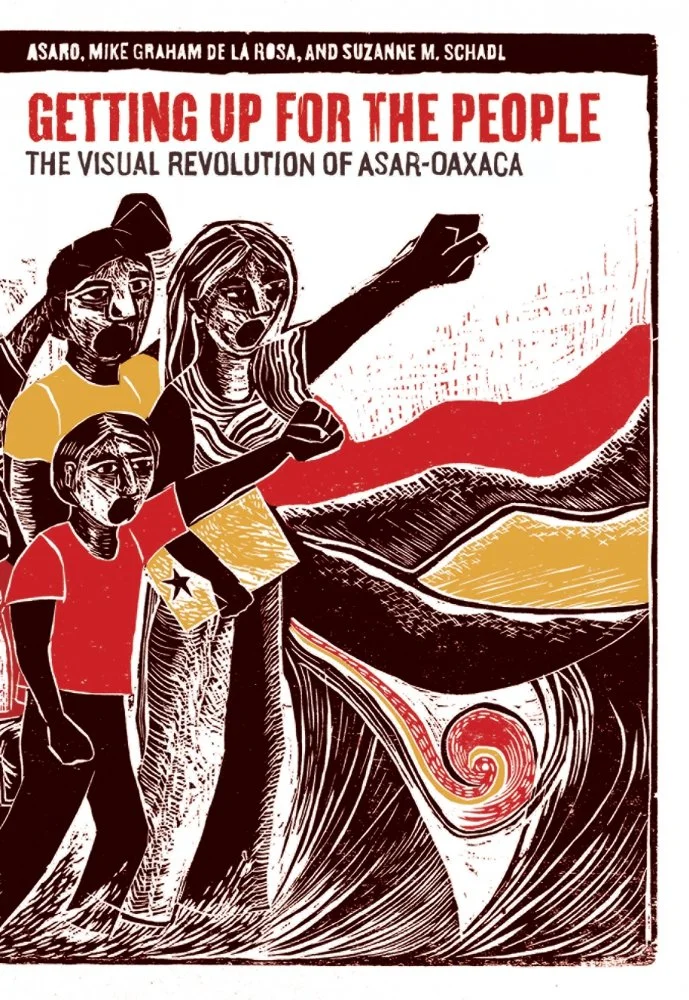ASARO (Assembly of Revolutionary Artists of Oaxaca)
This group of 9 prints are from the first year of the groups organization in 2006. ASARO is a contemporary Mexican artists’ collective working in wood and linoleum block prints, large-scale graffiti murals, stencils and digital media. The group formed in 2006 following a police action ordered by Oaxaca’s governor, Ulises Ruiz Ortiz, on June 14, 2006. Following this police strike, many Oaxacan residents took to the streets in protest. As the conflict intensified in the following months, a collective resistance called the Asamblea Popular de los Pueblos de Oaxaca/Popular People’s Assembly of Oaxaca (APPO) formed to fight government repression. It included indigenous organizations, women’s groups, rural workers, religious activists, students, human rights organizations and artists. Like other groups and individuals within the APPO resistance, ASARO calls for participation from ‘el pueblo.’
A collective is a group working together with shared resources toward a common goal. In an artists’ collective, generally speaking, ownership of pieces and resources belongs to the whole. In some cases artists use a collective stamp rather than individual signatures. In other instances they identify as individuals working on behalf of the collective. In the early stages of the Oaxaca Commune, the ASARO signature spared individuals punishment and/or retribution. It also empowered young people to create graffiti stencils, banners, and wheat pastes protesting human rights abuses. It is hard to say how many individuals participated in these early manifestations, and even more difficult to name them. Their collective success, however, helped to establish ASARO, which enabled the artists who remain — Mario, Cesar, Yeska, Ita, Irving, Chapo, Beta and Line, to sign their pieces. They do this in order to set competitive prices for collectors. As collectible and exhibited prints, ASARO’s works invite people outside of Oaxaca to look beyond the veneer of a quaint colonial-like city and see people struggling, while simultaneously telling the stories “del Pueblo.”









